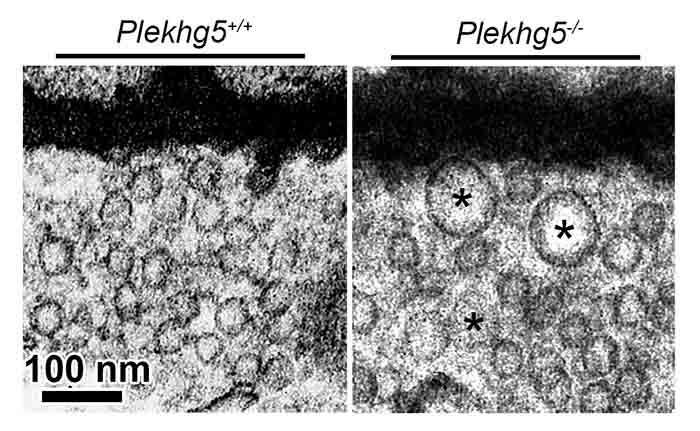A pathogenic mechanism in motoneuron disease

Motor neurons are the nerves that send impulses to the muscles to generate movement. Damage of these neurons can cause very diverse diseases, for example spinal muscular atrophy in children or adult amyotrophic lateral sclerosis.
Both disorders are characterised by muscle atrophy, palsy and ultimately by functional loss of muscles. The respiratory muscles are affected, too. The diseases are presently incurable; but their progress can be slowed down with drugs.
Autophagy as a new target for drugs
"So far, the development of new drugs has focused on preventing cell death mechanisms and on breaking down the protein aggregates in the affected nerve cells," Professor Michael Sendtner explains; he is the head of the Institute of Clinical Neurobiology of the Würzburg university hospital.
But now Sendtner with his colleague Patrick Lüningschrör and their team have identified another potential target for future drugs: It is the complex process of autophagy, as the researchers report in the journal Nature Communications. This process makes sure that the impulse transmission between motor neurons and muscles works permanently in normal function.
Aggregation of vesicles at synapses
The PLEKHG5 gene was the starting point for the new insight. Mutations in this gene are known to trigger various forms of motor neuron disorders. The Würzburg scientists have now found out that this gene is crucial for autophagy: It controls the degradation of the synaptic vesicles that contain the neurotransmitter acetylcholine and transport the excitation from the nerve to the muscles.
When deactivating the PLEKHG5 gene at single motor neurons in a cell culture, autophagy is reduced causing the synaptic vehicles to agglomerate. And in mice disabling this gene triggers a motor neuron disorder which also entails massive vesicle aggregation.
Consequences for drug development
"The findings deliver substantial evidence that dysfunctional autophagy plays a central role in the development of motor neuron diseases," Sendtner says. He believes that this new finding will have to lead to a rethinking of the development of new drugs with a need for substances that prevent or reduce vesicle aggregation.
More information: Patrick Lüningschrör et al. Plekhg5-regulated autophagy of synaptic vesicles reveals a pathogenic mechanism in motoneuron disease, Nature Communications (2017). DOI: 10.1038/s41467-017-00689-z


















